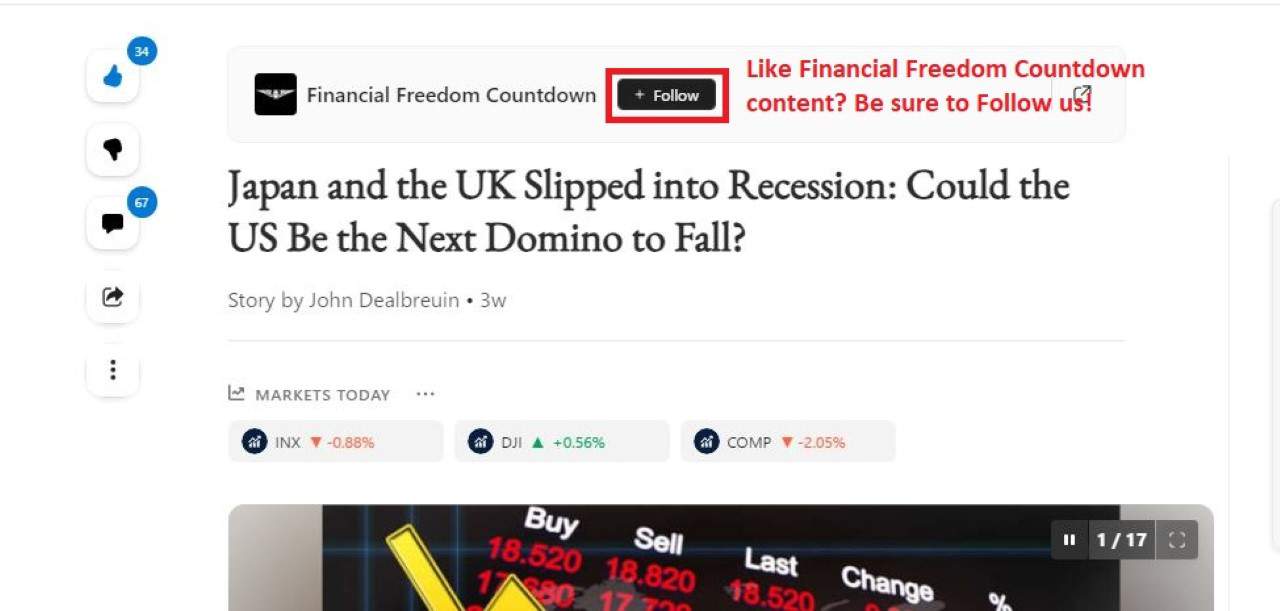Millions Could Miss Out On A New $1,000 Federal Retirement Match. Check If You Qualify – Financial Freedom Countdown

Beginning in 2027, millions of lower- and moderate-income savers will qualify for what financial researchers are bluntly calling “free money.”
The new federal Saver’s Match; created under the 2022 SECURE 2.0 Act will replace today’s underused Saver’s Credit with a far more powerful benefit: up to $1,000 deposited directly into your retirement account every year.
Morningstar’s early modeling suggests that eligible participants could see retirement wealth jump as much as 12%, a remarkable return for a program few Americans have even heard of.
Why the Saver’s Credit Failed and the Saver’s Match May Finally Deliver

The Saver’s Credit has always struggled.
Because it’s a tax credit, millions of low-income workers who owed little or no taxes couldn’t benefit. In 2021, only 5.7% of taxpayers claimed it.
The Saver’s Match fixes that flaw.
It’s a direct federal deposit, not a tax offset, and it goes into your IRA or workplace retirement plan whether or not you owe income taxes. For the first time, the incentive becomes real cash.
How the Saver’s Match Works

The program matches 50% of the first $2,000 contributed each year to a qualified retirement account.
Maximum match: $1,000 per person
There are income limit for full match.
For single filers, modified adjusted gross income upto $20,000 gives you the full match and for married filing jointly, modified adjusted gross income of $40,000 gives the full match.
Partial match for single filers is between $20,000 to $35,000
Similarly, Married filing jointly modified adjusted gross income between $40,000 to $71,000 gets a partial match.
How Many Will Qualify?

New analysis from the Employee Benefit Research Institute (EBRI) shows the scale of the program:
83.8 million Americans have incomes within the eligible range
69 million have W-2 wage income; meaning they can contribute
21.9 million already contribute to a retirement plan and would immediately qualify in 2027
That includes:
18.9 million workplace plan participants
1.0 million traditional IRA contributors
2.0 million Roth IRA contributors
And that’s just based on 2018 data; EBRI expects participation to rise even higher by the time the program launches in 2027.
Why Researchers Call It “Free Money”

Retirement experts put it plainly: “Even if people only qualify for a partial match, this is free money to get from the government for retirement.”
This matters because small contributions in your 20s and 30s can snowball into six-figure gains.
Morningstar’s models show that even after factoring in “leakage”; such as cashing out small 401(k) accounts the lifetime benefit remains substantial.
How Just $1,000 More a Year Compounds Into a Fortune

Compounding explains why the Saver’s Match matters so much.
A 22-year-old saving $2,000 per year at an 8% return reaches $835,000 by age 67. Boost that to $3,000 a year (via the match), and their retirement balance could reach $1.25 million.
A federal $1,000 match every year doesn’t just help; it transforms long-term outcomes.
The Groups That Stand to Benefit Most

According to research from Morningstar and Pew, the Saver’s Match will disproportionately help:
Younger workers, lower-income earners and women
Because these groups historically have lower retirement savings balances, the match can meaningfully narrow long-standing wealth gaps.
Big Picture: A $2.03 Trillion Impact Over 40 Years

Morningstar’s 2025 projection estimates that the Saver’s Match could deliver $2.03 trillion in additional retirement wealth to American workers over four decades.
That’s not a typo; it’s a generational impact.
The Program’s Biggest Challenge: Millions of Job Switchers

One potential headache is Americans are highly mobile in terms of jobs.
Morningstar and RCH estimate that over one-third of eligible workers will switch jobs, change plans, or experience provider changes before match dollars are deposited at tax time.
With 18.9 million eligible workplace savers, that means more than 7 million accounts could be disrupted a year; creating major administrative challenges for both the IRS and plan providers.
Auto-IRAs Could See a Surge in Participation

Pew’s research shows something additional: The match may serve as the missing incentive for workers in the 17 states offering auto-IRAs.
Workers without employer plans; nearly 57 million people could finally get a meaningful nudge to save.
A federal match layered onto automatic payroll contributions could dramatically increase early-career savings rates.
Why the Saver’s Match Is an Improvement in Every Direction

The new system:
– Deposits real cash instead of reducing tax liability
– Phases out gradually, instead of the sharp cliffs in the old credit
– Applies to more account types, including auto-IRAs
– Rewards early, consistent contributions
– Has broader demographic reach
It’s rare to see a retirement policy with this much bipartisan support and potential upside.
When the Money Starts Flowing

The Saver’s Match takes effect for tax years starting January 1, 2027.
But once it’s live, 21.9 million Americans will get a federal match hitting their retirement account; no employer required.
The Little-Known Program That Could Boost Retirement Wealth by 12%

A little-known federal program could turn small contributions today into hundreds of thousands of dollars tomorrow. And for more than 21 million Americans, the opportunity is already on the horizon.
For low-income savers especially, this is more than a policy change; it’s a chance to finally get ahead.
Like Financial Freedom Countdown content? Be sure to follow us!
Trump’s 50-Year Mortgage Plan Promises Relief But Critics Say It’s a Debt Trap in Disguise

President Donald Trump has floated what he calls a “game-changing” solution to America’s housing crisis: a 50-year mortgage. The idea, aimed at lowering monthly payments for new buyers, has quickly become one of the most polarizing proposals of his second term. Supporters say the longer loan term would finally make homeownership attainable again. But critics; including many conservative voices; warn it could trap Americans in decades of debt, enrich lenders, and worsen the very affordability problems it claims to solve.
Trump’s 50-Year Mortgage Plan Promises Relief But Critics Say It’s a Debt Trap in Disguise
Trump Floats $2,000 ‘Tariff Dividend’ for Americans But Treasury Downplays Talk of Actual Checks

President Donald Trump’s latest social media announcement; a promise to send Americans a $2,000 “dividend” from tariff revenues has generated both excitement and uncertainty. In a Sunday post on Truth Social, Trump declared that a dividend of “at least $2000 a person (not including high income people!)” would be paid to everyone, funded by the trillions in tariff revenue his administration says it’s collecting. But Treasury Secretary Scott Bessent quickly clarified that Americans might not actually see checks in the mail. Instead, he hinted that the so-called “dividend” could come through existing tax cuts and deductions already signed into law.
Trump Floats $2,000 ‘Tariff Dividend’ for Americans But Treasury Downplays Talk of Actual Checks
Treasury Hikes I Bond Rate to 4.03%, Yet Fixed Portion Drops — Here’s What It Means for Savers

The U.S. Treasury has announced a new 4.03% rate for Series I savings bonds, slightly higher than the previous 3.98%. But beneath the bump lies a subtle setback: the fixed-rate portion has slipped to 0.9% from 1.1%. That quiet change could reduce long-term returns for investors hoping to lock in inflation-protected income, even as I bonds remain one of the safest options for conservative savers.
Treasury Hikes I Bond Rate to 4.03%, Yet Fixed Portion Drops — Here’s What It Means for Savers

Did you find this article helpful? We’d love to hear your thoughts! Leave a comment with the box on the left-hand side of the screen and share your thoughts.
Also, do you want to stay up-to-date on our latest content?
1. Follow us by clicking the [+ Follow] button above,
2. Give the article a Thumbs Up on the top-left side of the screen.
3. And lastly, if you think this information would benefit your friends and family, don’t hesitate to share it with them!

John Dealbreuin came from a third world country to the US with only $1,000 not knowing anyone; guided by an immigrant dream. In 12 years, he achieved his retirement number.
He started Financial Freedom Countdown to help everyone think differently about their financial challenges and live their best lives. John resides in the San Francisco Bay Area enjoying nature trails and weight training.
Here are his recommended tools
Personal Capital: This is a free tool John uses to track his net worth on a regular basis and as a retirement planner. It also alerts him wrt hidden fees and has a budget tracker included.
Platforms like Yieldstreet provide investment options in art, legal, real estate, structured notes, venture capital, etc. They also have fixed-income portfolios spread across multiple asset classes with a single investment with low minimums of $10,000.